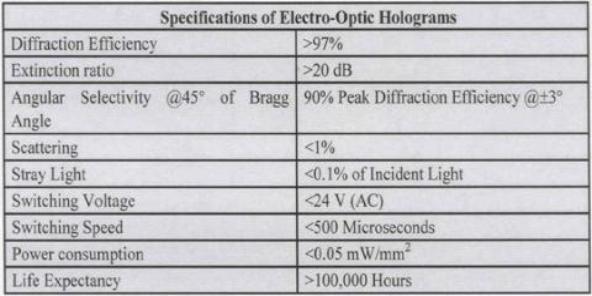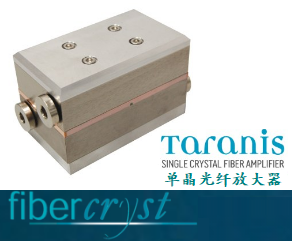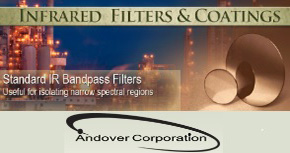公司简介
Crystal Research, Inc.公司位于美国加州旧金山湾区东南部的Fremont市,公司成立于2001年,主要从事先进电光材料和器件的研发。
产品列表
Ultra Thick Gratings (UTG)
Ultra Thick Gratings (UTG) represents a new grating platform technology capable of many photonic applications. Our UTG technology is based on a proprietary polymer composite that has a refractive index modulation within the volume of the material. The proprietary polymer composites are physically and chemically very stable, resulting in a robust grating structure subjected to typical telecom and military operating temperatures. Unlike conventional phase gratings, ultra thick gratings can be made with thickness from 3 microns to 3mm in excellent optical transparency. UTG can be polarization insensitive suitable for many fiber-optic applications. UTG exhibits high diffraction efficiency, low wavefront distortion, low optical scattering. UTG, packaged between two integrated glass plates, is extremely durable and easy to handle.
Typical Grating Specifications
| Operating Wavelength | 350 nm ~ 4000 nm |
| Diffraction Efficiency | 1% ~ 99.9% |
| Diffraction Angle | 1 ~ 89 Degree |
| Incident Angle | 0 ~ 89 Degree |
| Grating Thickness | 1 ~ 5000 microns |
The advantages of UTG are obvious:
. UTG hasa higher peak diffraction efficiency achievable ( >95% ),
• UTG can have a very large thickness up to 3 mm,
• UTG is protected and can be cleaned,
• UTG is lack of ghost and scattered light,
• UTG can be tuned to peak the diffraction efficiency at a desired wavelength,
• UTG can be designed to work in transmission or reflection,
• UTG can be recorded with aberration compensation,
• UTG can be produced in large dimension.
UTG diffraction efficiency can be theoretically modelled by both the rigorous
coupled wave analysis or modal analysis. These theories take multi-order
diffraction into account. Their formalisms require computation since no analytic
solution can be found for useful configurations. However, in most cases, first
order efficiency can be estimated by the Kogelnik's two-wave coupled analysis,
which is simplified by approximations.
Following Simulation Shows Typical Performance Difference
Between Ultra Thick Gratings and Conventional Gratings:
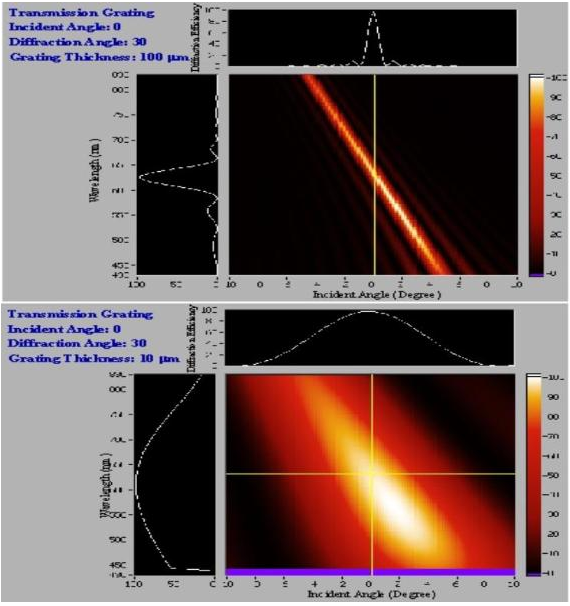
KTN and SBN Electro-Optic Crystals
Ultra Large Electro-Optic Effects
1. High Quality Optical Transparent Crystal: SrBaNb2O6 (SBN)
SBN is a very attractive material for technological applications and basic research due to its outstanding photorefractive, electro-optic, nonlinear optic, and dielectric properties. SBN:61 electro-optic crystal has a very large electro-optic coefficient up to 1400 pm/V.
2. Research Grade Optical Transparent Crystal: KTaNbO3 (KTN)
KTN is transparent isotropic crystal with very large electro-optic coefficients of about >600 pm/V, which is 20 times larger than that of conventional LiNbO3.
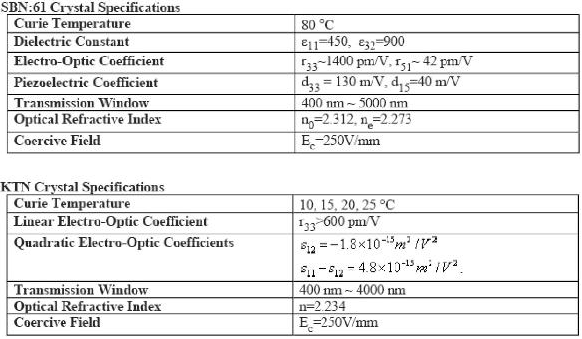
Electro-Optic Holograms
Electro-optic (E-O) holograms can be electrically switched on-and-off through E-O effect. These holograms are formed by recording volume phase hologram in liquid crystal-monomer mixture. Typically, electro-optic holograms are recorded by illuminating the liquid crystal-polymer mixture with two mutually coherent laser beams, which interfere to form the desired grating structure. During the recording process, the monomers polymerize and the liquid crystal-polymer mixture undergoes a phase separation, creating regions densely populated by liquid crystals, interspersed with regions of clear polymer. The alternating liquid crystal and polymer regions form the fringe planes of the grating. The resulting volume phase hologram can exhibit very high diffraction efficiency, which can be controlled by the magnitude of the electric field applied. When an electric field is applied to the hologram via electrodes, the natural orientation of the LC droplets is changed to cause the refractive index modulation of the fringes. In other words, the diffraction efficiency of electro-optic holograms can be adjusted, by means of the applied voltage, over a continuous range from essentially zero to near 100% at very fast switching speed.
